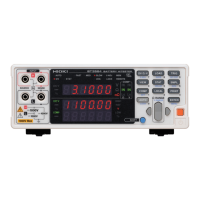4.4 Statistical Calculation Functions
60
The mean, maximum, minimum, standard deviation of population, standard devi-
ation of sample and process capability indices are calculated and displayed for
up to 30000 measurement values.
The calculation formulas are as follows:
• In these formulas, n represents the number of valid data samples.
• Hi and Lo are the upper and lower thresholds of the comparator.
• The process capability indices represent the quality achievement capability
created by a process, which is the breadth of the dispersion and bias of the
process' quality. Generally, depending on the values of Cp and CpK, process
capability is evaluated as follows:
Cp, CpK>1.33........................ Process capability is ideal
1.33 Cp, CpK>1.00............. Process capability is adequate
1.00 Cp, CpK...................... Process capability is inadequate
4.4 Statistical Calculation Functions
Mean
Standard deviation of popula-
tion
(=
n
)
Standard deviation of sample (=
n-1
)
Process capability index (dis-
persion)
Process capability index (bi-
as)
• When only one valid data sample exists, standard deviation of sample and
process capability indices are not displayed.
• When
n-1
is 0, Cp and CpK are 99.99.
• The upper limit of Cp and CpK is 99.99. Values of Cp and CpK>99.99 are
displayed as 99.99.
• Negative values of CpK are handled as CpK=0.
• When comparator, range or auto-ranging settings are changed while statisti-
cal data is displayed, the display of Cp and CpK values changes to “- - . - -”.
• When normal measurement values and relative display values (%) are
mixed, correct calculation results cannot be obtained.

